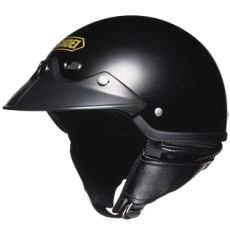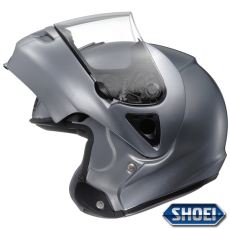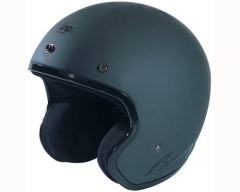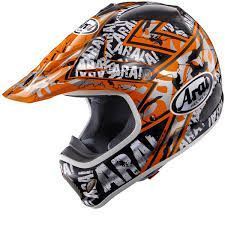One of the more fun and exciting way to hit the road is with a motorbike, but riding one of these two-wheel machines also means wearing the proper protection to minimise the chances of severe injuries. Selecting the most important gear – the helmet – could make the difference between a fun and exciting ride and a fatal one.
Choosing the right helmet for you
Choosing the right helmet is not about fashion or style but functionality. Below are tips to guide you in picking your motorcycle helmet:
Get the right fit for you
People’s head size and shape vary extensively. Getting the right fit is the number one thing you should consider when choosing a motorcycle helmet. Wearing a helmet with the right fit will increase your survival chances during a crash. Motorcycle crashes across Europe showed that about 12 percent of helmets were lost during the impact.
Choose a helmet that meets the minimum legal safety standards
All motorcycle helmets sold on the market must conform to the European standard ECE 22.05 to ensure the suitability of the helmet. Helmets that have passed the test will have a sticker attached to them with a label sewn on to the strap.
If you’re looking for a helmet that is more comprehensively qualified, SHARP definitely raised the bar – putting motorcycle helmets through a more rigorous and targeted testing process. You can search many different helmets on their website and see what protection each one gives.
Don’t buy second-hand helmets
You never know with a second-hand helmet with it has been involved in a crash. All helmets that have been involved in an impact should be replaced as it may have weakened the structure.
The main components of a motorcycle helmet
- Rigid outer shell – is made of fibre-reinforced composites designed specially to absorb and diffuse the impact.
- Impact-absorbing liner – this is a dense layer made of expanded polystyrene to absorb and cushion your head upon impact.
- Comfort padding – is a layer of cloth and foam to keep your head comfortable and fit
- Chin strap (retention system) – it keeps the helmet intact to your head especially during a crash.
Basic types of motorcycle helmet
 Full-face
Full-face
This helmet covers the entire head including the face, the front chin, the jaw, and the base of the skull, only leaving an opening for visibility – the visor. The full face helmet has the most protection and is the most commonly sold among all the helmet types.
Pros
- Offer the most protection amongst all helmet types
- Good aerodynamics due to its round shape and is therefore not very strenuous to the neck
Cons
- Heavy and bulky
- Reduced auditory capability
- Poor ventilation
 Half helmet
Half helmet
Also commonly referred to as ‘shorties’ or ‘pudding basins’ – are usually for novelty purposes covering only the top of the head up to the ears. The half helmet also provides the minimum coverage allowed by British Standards 2001:1956 and most laws
Pros
- Very light and often more comfortable to wear
- Offers good visibility amongst all other types
Cons
- Has the least protection during a crash
- Poor aerodynamics because of its shape
- More strenuous to the neck if aerodynamics are wrong
 Flip-up or Modular
Flip-up or Modular
Modular helmets consists of foldable parts which sometimes can be detached, and is a combination of the three-quarter shell and full face helmet. Its portion protecting the face (face guard) can be flicked up when desired, for example in low-speed city traffic during a hot day, leaving the rider’s face exposed.
Pros
- Offer very good head protection
- Very convenient movable face guard that could easily be flicked through when you need to communicate or eat, or stay a little cooler.
Cons
- Heavy and bulky than most types
- Its design might cause a rise in wind drag
 Open face
Open face
Also known as ¾ helmet, they can be more comfortable than full-face helmet but it leaves the face exposed and vulnerable during a crash.
Pros
- Lighter than a full-face helmet
- Greater visibility
Cons
- Does not offer as much protection as the full-face helmet
- Gives less protection from rain, wind, dust, insects, and noise than a full-face helmet
 Motocross
Motocross
Motocross helmets are also called ‘off-road’ helmets. They have a distinct extended chin guard and sun visor. Riders who use this helmet for sports wear goggles for eye protection since the helmet is not often equipped with a face shield. Goggles can be prone to fogging in certain weather conditions.
Pros
- Offer good ventilation
- Equipped with elongated sun visor to protect vision from glare especially during uphill manoeuvres
- Elongated chin guard serves as a shield to block dirt from getting into your field of vision
Cons
- The elongated sun visor and chin guard could increase wind resistance especially when riding at high speeds
- Could be strenuous to the neck due to its aerodynamic design
Remember that it’s illegal to ride your bike with a helmet on if it’s not fastened correctly, and you should never fasten your helmet solely with the Velcro tab. Remember to use only soapy water to clean your goggles and helmet as commercial cleaners can contain products that will weaken the shell.
Now you’ve got your helmet sorted you might also want to think about a helmet-mounted video camera to capture your rides. Click here to read our guide.

[…] If you want to know how to evaluate what’s the best helmet for you, check out our helmet guide here. […]